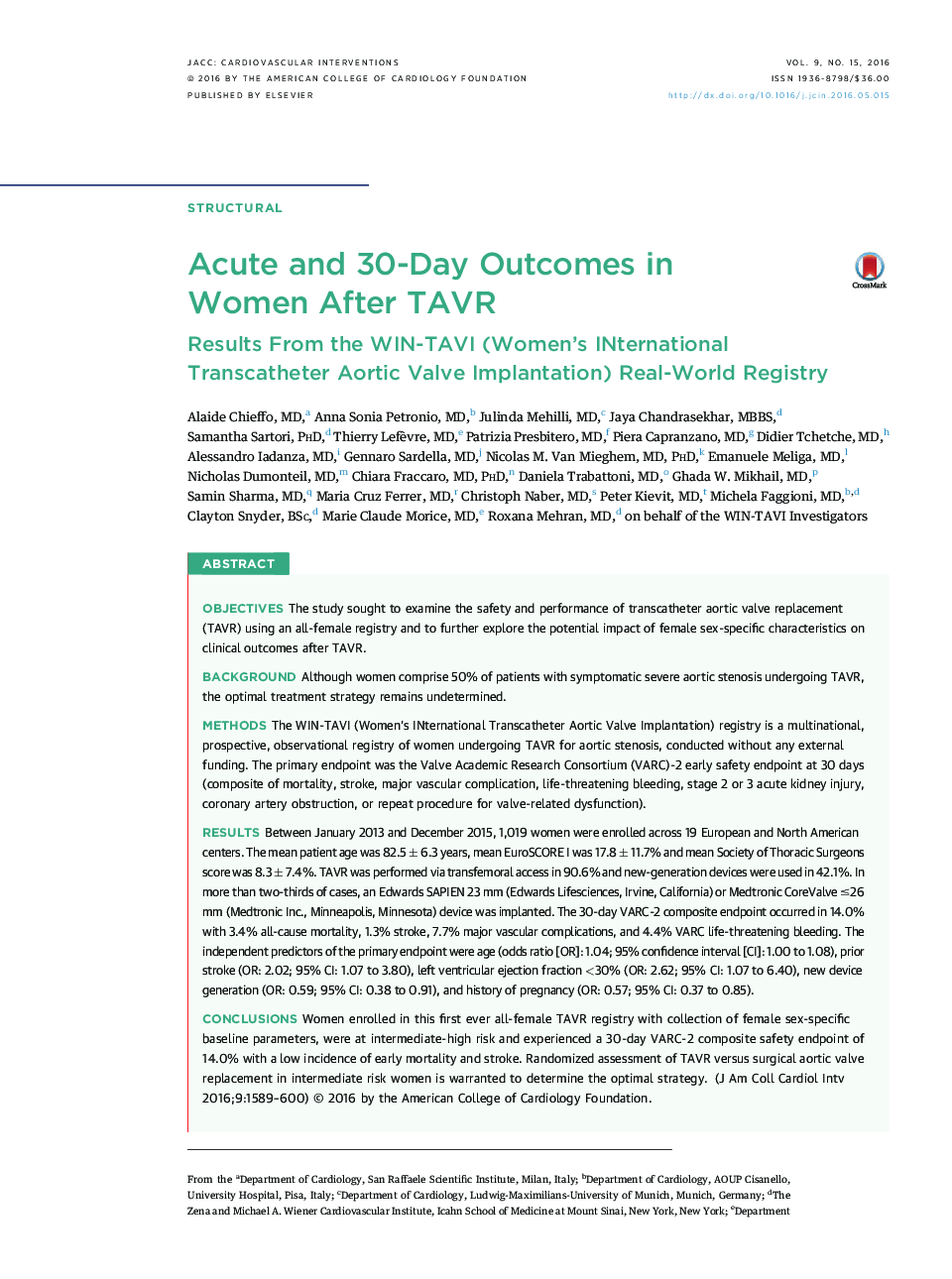| کد مقاله | کد نشریه | سال انتشار | مقاله انگلیسی | نسخه تمام متن |
|---|---|---|---|---|
| 2939577 | 1176993 | 2016 | 12 صفحه PDF | دانلود رایگان |

ObjectivesThe study sought to examine the safety and performance of transcatheter aortic valve replacement (TAVR) using an all-female registry and to further explore the potential impact of female sex-specific characteristics on clinical outcomes after TAVR.BackgroundAlthough women comprise 50% of patients with symptomatic severe aortic stenosis undergoing TAVR, the optimal treatment strategy remains undetermined.MethodsThe WIN-TAVI (Women’s INternational Transcatheter Aortic Valve Implantation) registry is a multinational, prospective, observational registry of women undergoing TAVR for aortic stenosis, conducted without any external funding. The primary endpoint was the Valve Academic Research Consortium (VARC)-2 early safety endpoint at 30 days (composite of mortality, stroke, major vascular complication, life-threatening bleeding, stage 2 or 3 acute kidney injury, coronary artery obstruction, or repeat procedure for valve-related dysfunction).ResultsBetween January 2013 and December 2015, 1,019 women were enrolled across 19 European and North American centers. The mean patient age was 82.5 ± 6.3 years, mean EuroSCORE I was 17.8 ± 11.7% and mean Society of Thoracic Surgeons score was 8.3 ± 7.4%. TAVR was performed via transfemoral access in 90.6% and new-generation devices were used in 42.1%. In more than two-thirds of cases, an Edwards SAPIEN 23 mm (Edwards Lifesciences, Irvine, California) or Medtronic CoreValve ≤26 mm (Medtronic Inc., Minneapolis, Minnesota) device was implanted. The 30-day VARC-2 composite endpoint occurred in 14.0% with 3.4% all-cause mortality, 1.3% stroke, 7.7% major vascular complications, and 4.4% VARC life-threatening bleeding. The independent predictors of the primary endpoint were age (odds ratio [OR]: 1.04; 95% confidence interval [CI]: 1.00 to 1.08), prior stroke (OR: 2.02; 95% CI: 1.07 to 3.80), left ventricular ejection fraction <30% (OR: 2.62; 95% CI: 1.07 to 6.40), new device generation (OR: 0.59; 95% CI: 0.38 to 0.91), and history of pregnancy (OR: 0.57; 95% CI: 0.37 to 0.85).ConclusionsWomen enrolled in this first ever all-female TAVR registry with collection of female sex-specific baseline parameters, were at intermediate-high risk and experienced a 30-day VARC-2 composite safety endpoint of 14.0% with a low incidence of early mortality and stroke. Randomized assessment of TAVR versus surgical aortic valve replacement in intermediate risk women is warranted to determine the optimal strategy.
Journal: JACC: Cardiovascular Interventions - Volume 9, Issue 15, 8 August 2016, Pages 1589–1600